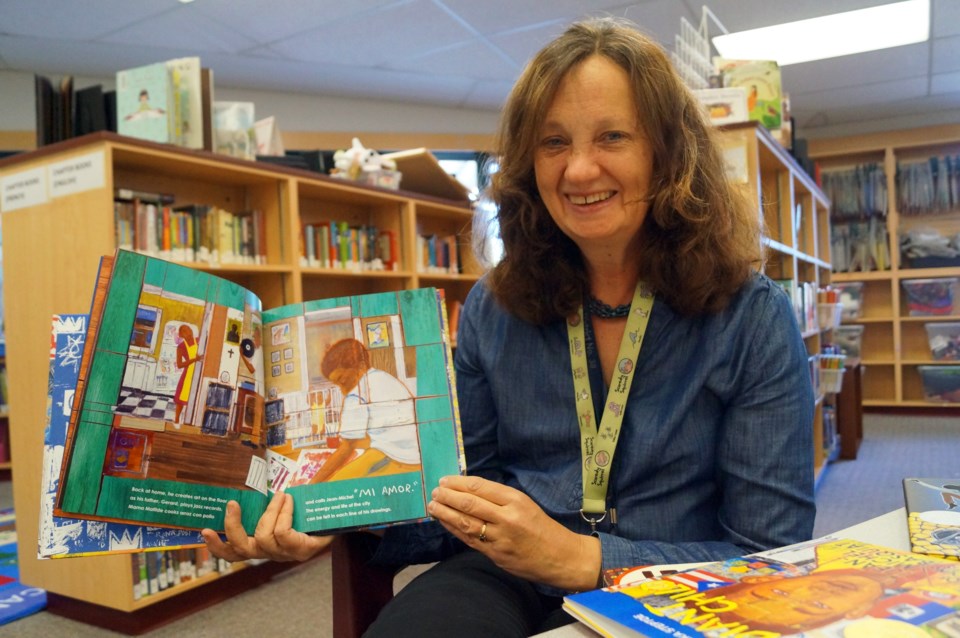For her entire life, she’s been surrounded by words. But it is pictures that will have helped define her career.
Anderson elementary school librarian Janet Mumford, who has worked at several Richmond schools since 1991, is a rare Canadian sitting on a prestigious literary awards committee — for the Randolph Caldecott Medal, the most distinguished American children’s picture book award.
“To me, you look at the beginning of humans. The way we started to communicate was through visual history. Before we ever had the written word we communicated with pictures. I think there’s a real instinctual human love and desire for communicating visually. I love art and the picture book,” said Mumford, who recently took part in the rotating, 15-member Caldecott Medal committee, to select one book winner and a handful of honoured selections for 2017.
Normally reserved for Americans, the committee, on rare occasions, allows Canadians, so long as they hold membership with the American Library Association — which Mumford does, having completed a Masters of library science at UCLA.
While in California, a committee member introduced her to the Caldecott Medal.
“At that point I decided I wanted to do that. It became a life goal,” said Mumford.
Mumford explained that in today’s publishing world that is increasingly dominated by digital mediums, the Caldecott continues to hold significant clout, much like the Pulitzer Prize.
“If your book wins this award, you’re set for life. This award holds so much prestige and esteem. When you win, your book is put in libraries all around the world and it will be translated into many different languages. So many books go out of print these days; these books don’t go out of print if they’ve won the Caldecott award,” she said.
The committee is a two-year affair in order to select one annual winner.
“When you sign on to the committee you have to be willing to dig, dig, dig,” she said.
Books are heaped on her and she is tasked to nominate seven.
“They are labours of love and deep creative works,” explained Mumford.
This year’s winner was Radiant Child: The Story of Young Artist Jean Michel Basquiat. Mumford said the editor told her it took seven years to make.
“Each illustration is a work of art that has been photographed and then, working with book designers, made into a book,” said Mumford of Radiant Child.
Mumford said to be a good picture book (or graphic novel), the principle part of the story is told through pictures.
“It’s not where the pictures are supporting the text; it’s where the pictures in themselves can tell the story on their own,” she said.
Judging is incredibly complicated and based on formulas. But it boils down to a basic tenet.
“We always wonder what it’s like for a person to go through the journey of the book. Because it’s all experience; it’s an artistic experience to go through it.
“We want to choose something that someone will look at over and over and over again. That’s a Caldecott winner.”
Mumford said picture books are especially important at Anderson, for kindergarten kids and new immigrant students.
“The wonderful thing about a picture book is you’ll see someone who doesn’t have print literacy yet and they will examine the book. And that is a very powerful thing.”



